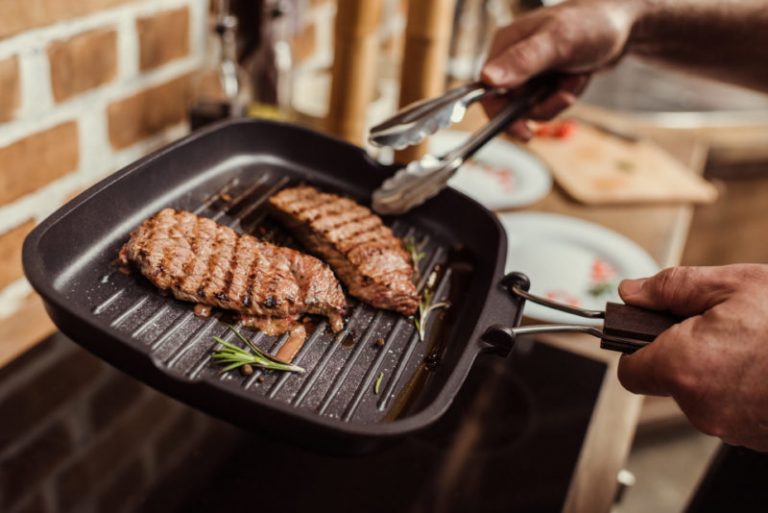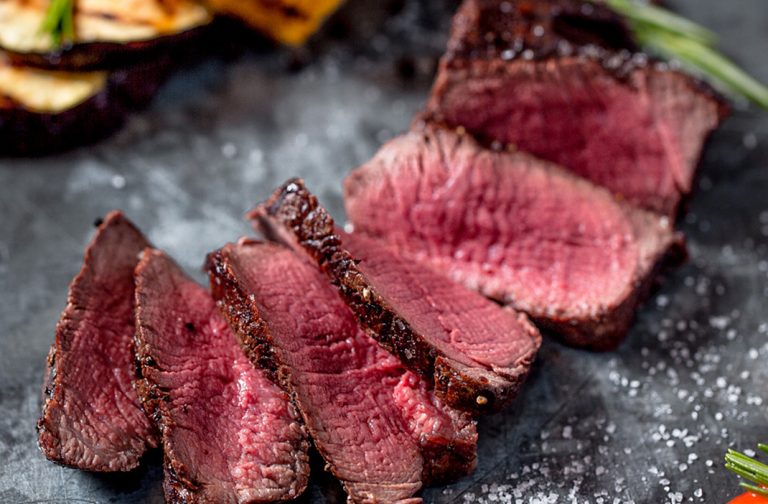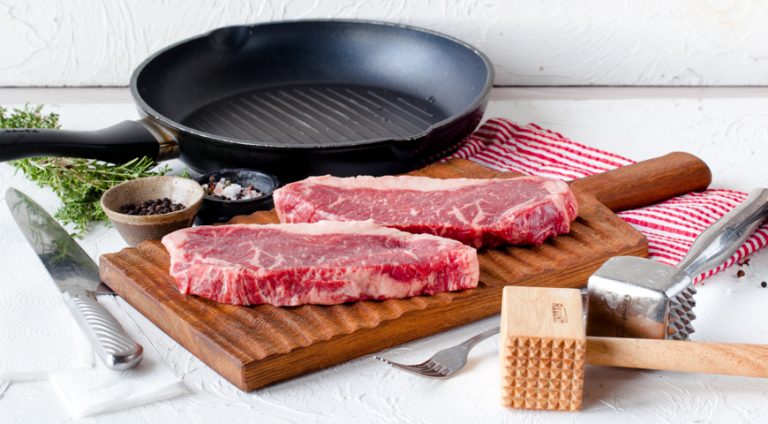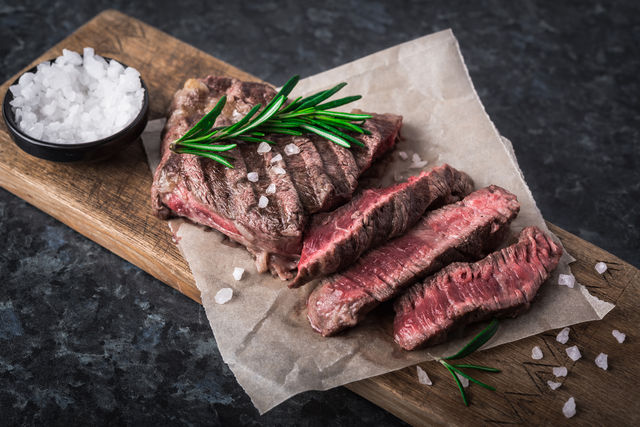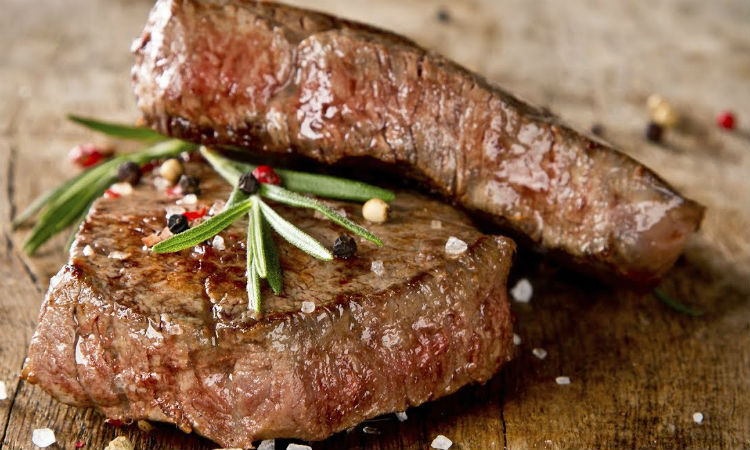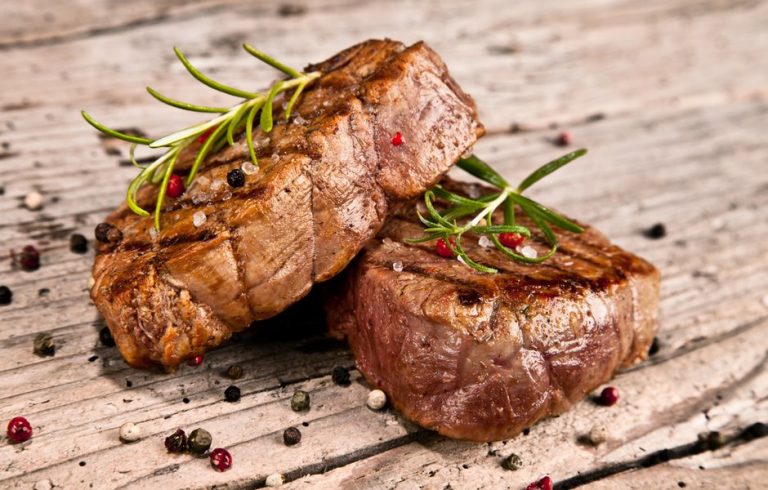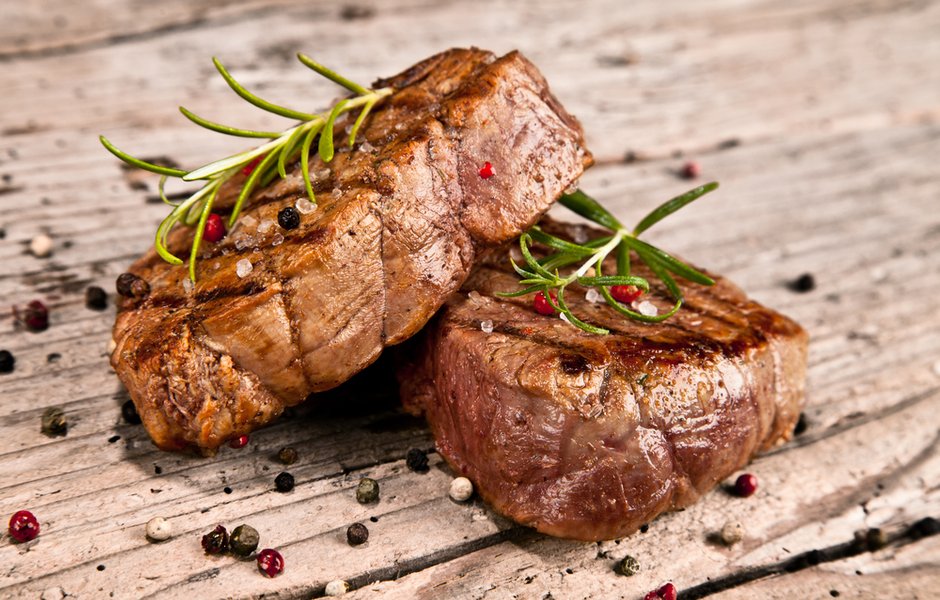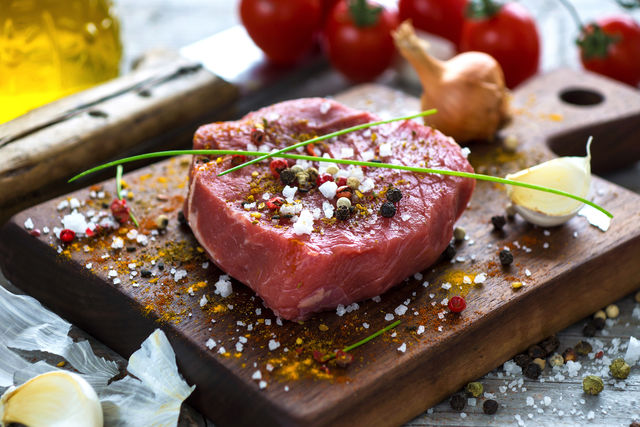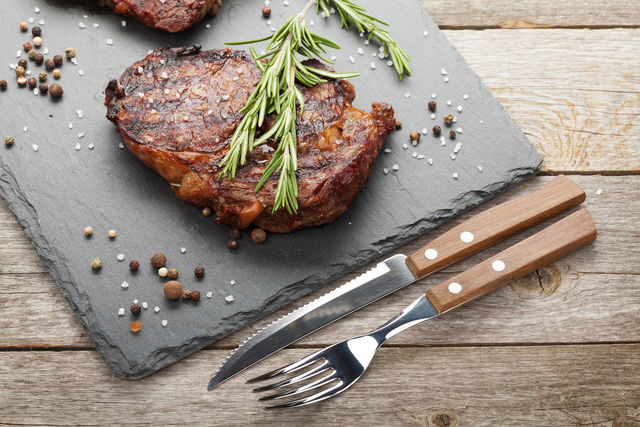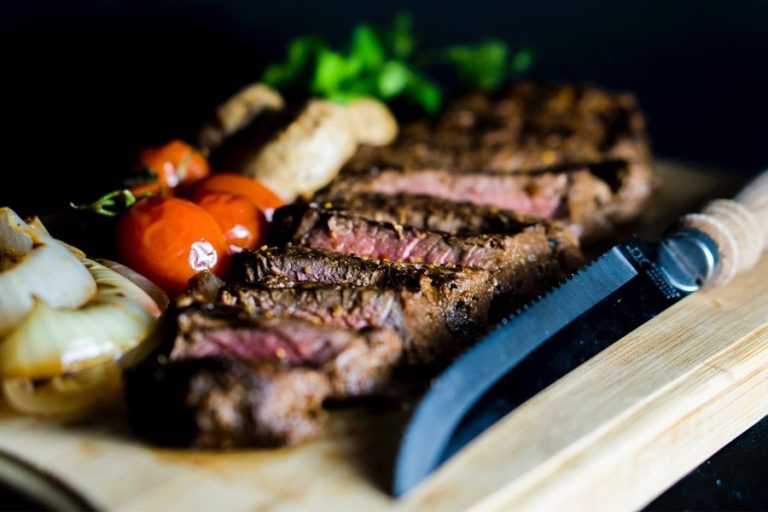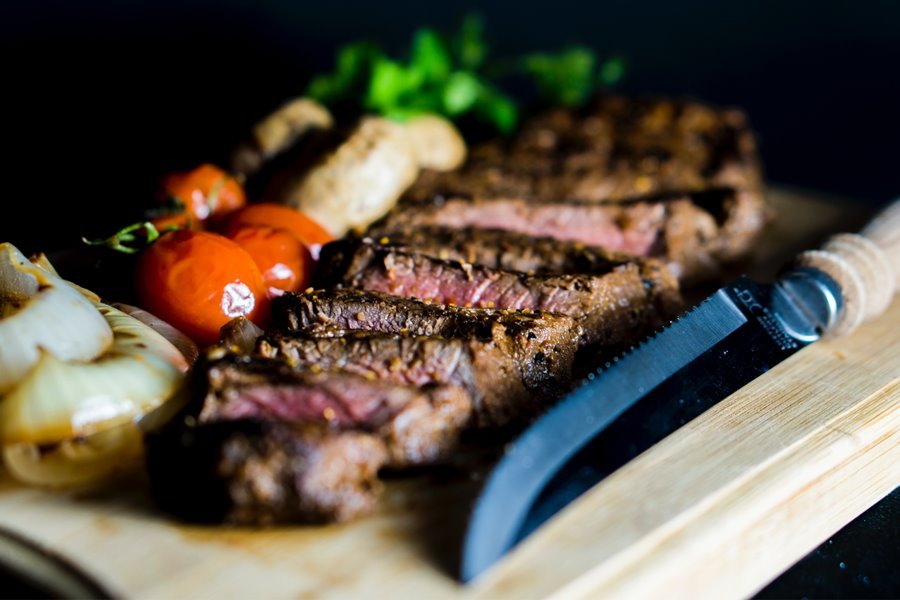The fact that you are not a professional chef and you do not have a grill is not a reason to leave your loved one without juicy, tasty meat. We assure you that you can get the perfect steak even in a frying pan, if you remember our tips and apply them in practice.
First of all, let’s figure out what ingredients are needed for a classic steak:
- meat (beef, cut into pieces no thicker or thinner 3-5 cm);
- salt, pepper, spices;
- oil (sunflower or olive)
Actually, this is all that is needed for a basic recipe that can be modified depending on your taste. At first glance, both the list of ingredients and the cooking process seem simple enough, but this is not at all the case. This is exactly the case when the devil is in the details.
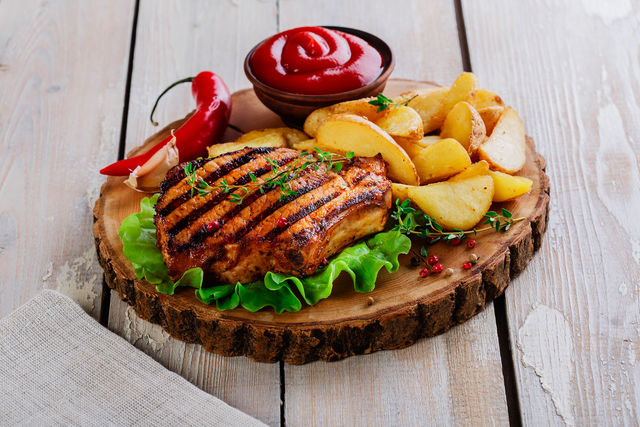
- Defrosting meat
In no case should you defrost the meat in the microwave: as a result of this manipulation, the edges of it will begin to cook, and the middle will remain frozen. This will prevent you from controlling the process of roasting the steak. The best option is to place the meat in a vacuum package in cold water.
- Preparation
Sprinkle the meat with pepper around the entire perimeter (fatty beetroot), and then salt and add spices. Then – grease the steak with butter on all sides: this will contribute to better thermal conductivity, which will allow the middle to fry evenly around the edges. Do not under any circumstances beat the meat, otherwise, it will lose its structure and release all the juice.
- Cooking
Heat a skillet without oil over high heat and place the meat on one side. After two and a half minutes, turn the steak over and fry on the other side. Repeat the same manipulations one more time (on each side again for two and a half minutes). Juicy steak – ready. Tip: when roasting meat, take into account the desired degree of doneness.

